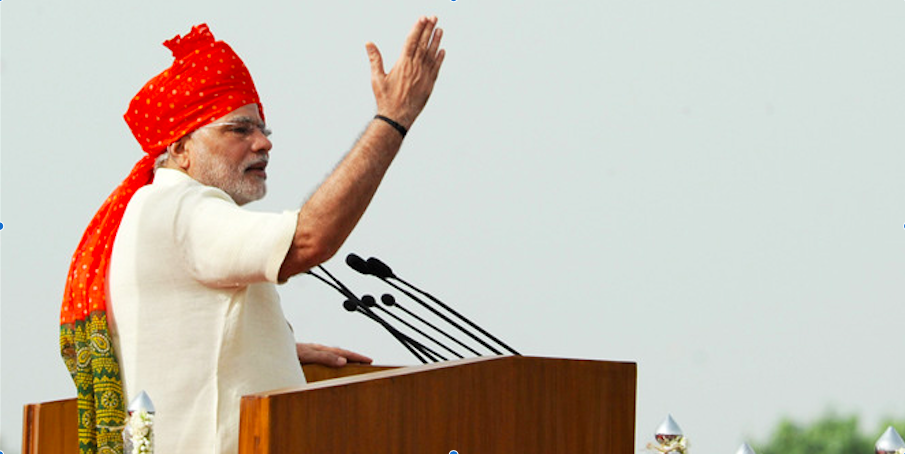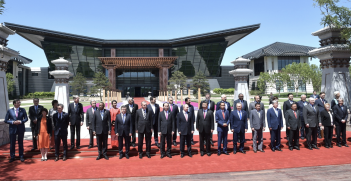Narendra Modi: Unshackling Indian Business

Critics who complain that Prime Minister Modi has not met the expectations of big business may need to change their opinion as he lays the groundwork for major changes to the way India does business.
Indian Prime Minister Narendra Modi came to office on the back of the huge expectations of, among others, India’s business community. They had every reason to maintain their expectations; as Chief Minister of India’s western state of Gujarat Modi had carried out major reforms in how business was conducted there. If he could carry out similar reforms as India’s Prime Minister, they reasoned, they could tap into the Indian community’s innate business skills to lift India out of the quagmire of bureaucracy and colonial red tape in which it had floundered since it became independent in 1947. Over the first year of Modi’s government, however, many of these expectations fell by the wayside. The expected reforms had not come about and business seemingly continued to flounder. As we will see, this perception is myopic. Modi is preparing the groundwork for a major shake-up of the manner in which business is conducted in India.
Comment
A major drawback to conducting business in India has been the indecisiveness exhibited by various governments over the years, none more so than that of the previous Prime Minister, Manmohan Singh. Modi inherited a stagnant economy; in 2014, for instance, India ranked 134th out of 189 countries in the World Bank’s ease of doing business index. Several factors have played their part in this. India’s bureaucrats have made their suspicions of private enterprise eminently clear. For instance, when the Hindustan Construction Company (HCC) undertook a US$55 million project on behalf of the National Thermal Power Corporation to work on the Loharinag Pala hydropower plant in the Himalayas, environmental protests erupted, bringing that project to a halt. When HCC sought compensation from the NTPC and was awarded costs and compensation of around US$15 million, the bureaucracy refused to pay and, instead, appealed to India’s legal system which, in a country whose bureaucracy moves at snail’s pace, is seen as exceptionally slow. HCC now faced an extended period of ten years at least to obtain their compensation.
This is but one example of the suspicion in which private enterprise is held by the bureaucracy. By one estimate, around US$23 billion is held up in disputes. As Rajiv Lall, Executive Chairman of the Infrastructure Development and Finance Company stated, ‘Historically, the bureaucracy has never seen it as their role to nurture or help business.’ The antipathy, if not downright hostility, the bureaucracy feels for private enterprise stems not only from colonial methods of governance but also from India’s education system. India’s top bureaucrats see themselves as the elite who have gone through the education mill and now deserve to be approached deferentially if they are to dispense their favours on supplicants.
Tax is another drawback to the ease of doing business in India. According to Arun Jaitley, India’s Finance Minister, around US$66 billion in taxes is being arbitrated in the legal system by private enterprises who feel they are being over-taxed and government officials who require to extract every rupee from an extremely narrow tax base.
Speaking in New Delhi in the latter half of 2014, Jim Yong Kim, then President of the World Bank, stated that if India as a whole could reach Gujarat’s efficiency in developing business, India would jump 57 places in the ease of doing business index. The equivalence is understandable. He simplified the approval process for new businesses, offered organisations cheap land to establish their factories and offices in Gujarat, provided them with low-interest loans, and gave them reliable supplies of power and water. Hardly surprising, then, that Indian and foreign organisations set up their offices and factories there – and equally unsurprising that the expectations placed on Modi as Prime Minister were huge.
Soon after being elected, Modi carried out several reforms. He has started the process to bring in an overall tax similar to Australia’s Goods and Services Tax, a reform of income tax so that tax is deducted at source (by some estimates less than 2 percent of employees pay income tax) and has, arguably more importantly, started to change the culture of the bureaucracy. No longer do senior bureaucrats play golf on working days; their honorary golf-club memberships have been cancelled, all government employees are now required to sign in when they arrive at work and their attendance is displayed on a public website, and bureaucrats are being made more personally accountable for their departments and the projects they undertake. The primary outcomes of these reforms have been enhanced business optimism and energised foreign relations. Modi himself has undertaken several visits to foreign countries and makes it a point to ensure at least one deal is concluded per visit. Consequently, he has concluded deals with Australia for the supply of uranium, with Canada for uranium and energy products, with Russia for defence and energy products and with the US for defence products, technology transfers and energy products.
A major aspect of Modi’s revamp of Indian industry has been the “Make in India” project, whereby foreign organisations are invited to manufacture in India – provided they enter into partnerships with Indian companies. Thus, in acquiring defence platforms such as fighter aircraft and ships, Modi insists that his government will purchase those products provided a significant portion of each order is manufactured in India by Indian partners. To achieve this end, bureaucratic reformation is vital.
As a consequence of these endeavours, India’s economy is said to have grown by 7 percent in 2015 and is expected to increase by another 7.5 percent again, if not more, in 2016. But Modi realises that more is needed. He takes very seriously the dictum that governments should not be in the business of business and has begun to selling off government holdings in public companies. He has also opening some sectors, including defence, to foreign investment, and has terminated India’s Planning Commission, a hold-over from India’s past that churned out Soviet-style five-year economic plans under successive Congress governments. He is fighting to reform India’s byzantine land-acquisition policy. While the main opposition Congress and other liberals see this as a corporate land grab, Modi says it is the only way to make it easier for businesses and government to buy land from farmers for factories, roads and other infrastructure projects.
Modi’s main battle now is to win a majority in India’s upper house of Parliament, the Rajya Sabha. If he can do this, he will have a much easier task ahead to bring about the major reforms he wishes to make. That victory, coupled with India’s talent for business, could see the country surge past the 7.5 percent growth it is scheduled to achieve. It is up to Indian businesses, then, to recognise this fact and jump onto the Modi bandwagon. If they were to do so they would help themselves by creating a much larger market and a healthier and more competitive one at that.
Lindsay Hughes is a research analyst at the Indian Ocean Research Program at Future Directions International. This article originally appeared on Future Directions International on 10 February. It is republished with permission.





